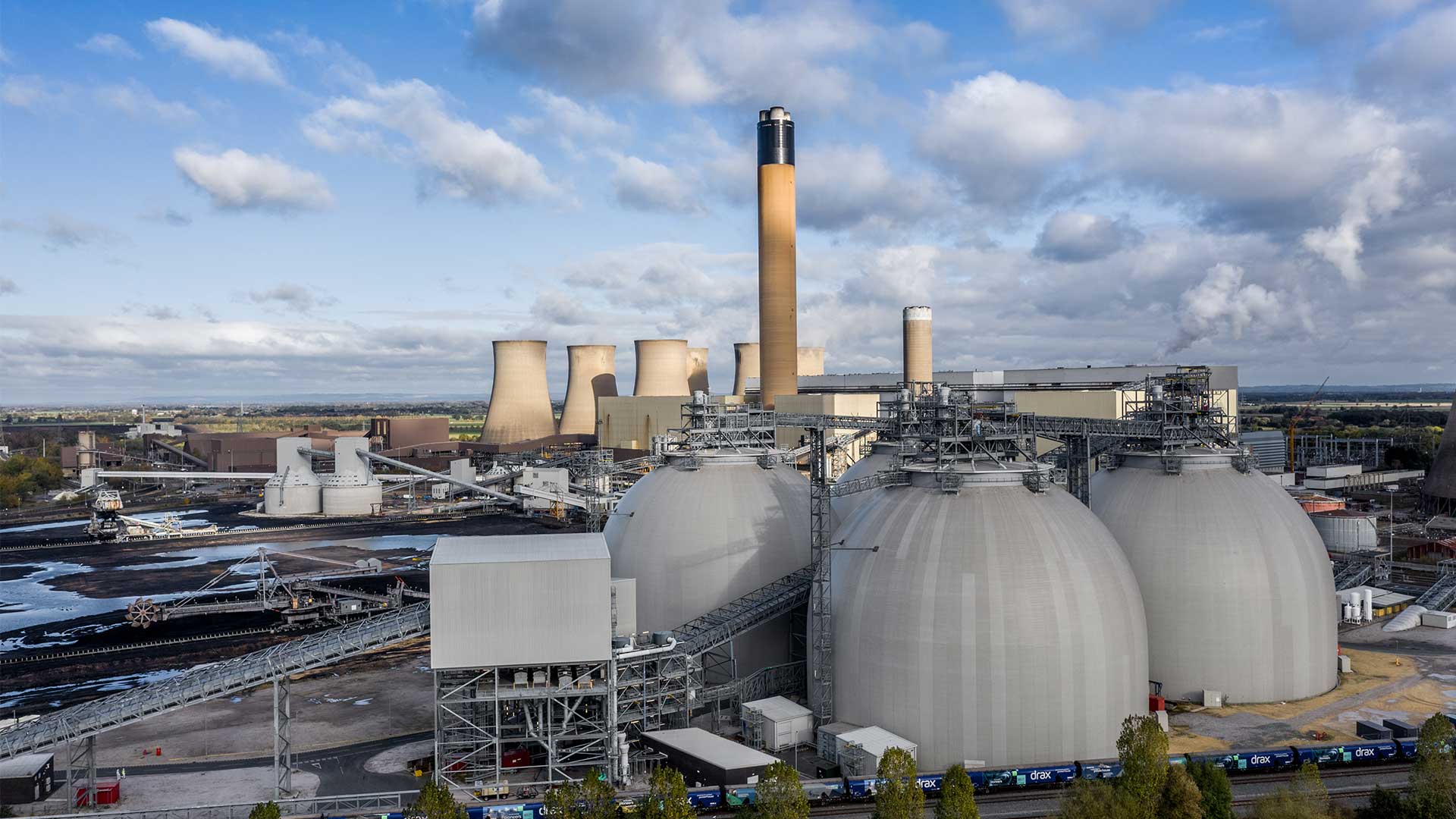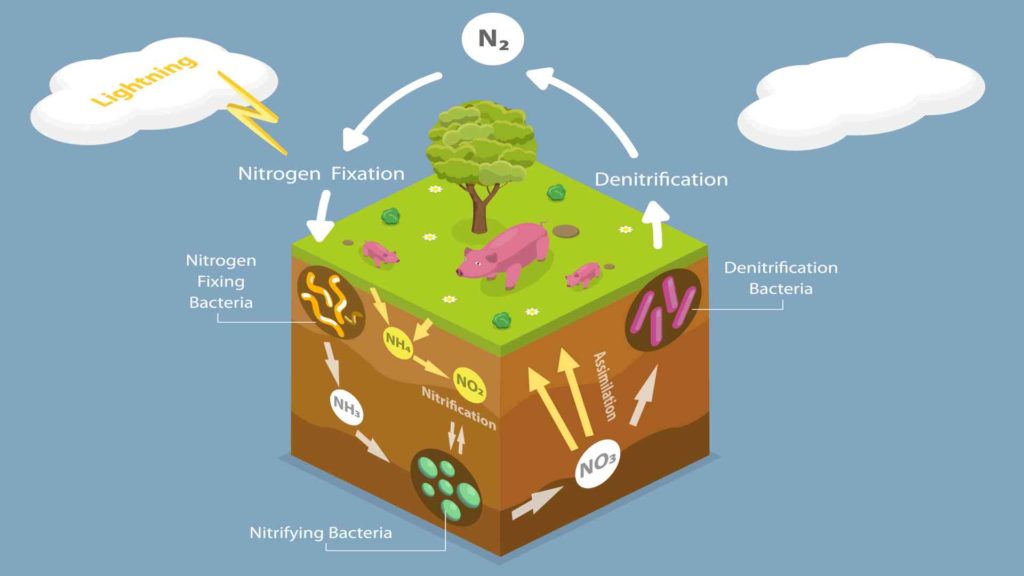Carbon Capture Funding and Boron
Carbon capture technology has been developed for coal-fired power plants with FECM support for over two decades. Over 20 successful pilot-scale projects have been implemented including a showcase demonstration project which captures and stores over one million metric tons of carbon dioxide per year. The US Government has now announced up to $96m of funding to advance natural gas power and industrial technologies. Boron has a big part to play in this respect.

Carbon Capture Funding and Boron (Aerial view of a coal fired Power Station Biomass fuel storage tanks with carbon capture capabilities)
Carbon capture technology has been developed for coal-fired power plants through FECM’s two decades of support, including more than 20 successful pilot-scale projects and a demonstration project capturing and storing over one million metric tons of carbon dioxide per year. Supporting carbon capture in the natural gas power and industrial sectors, such as cement and steel, has not yet reached pilot or demonstration scales, motivating the current emphasis on enabling development in these fields.
Technology advancement and cost transparency are necessary for wide-scale deployment, enabling this investment. The Biden-Harris Administration is seeking commercial deployment of these technologies to achieve a carbon-free power sector by 2035 and a net-zero greenhouse gas economy by 2050.
FECM Acting Assistant Secretary Jennifer Wilcox noted that recent developments in carbon capture technology, which should be commercially available by 2025, have decreased carbon capture costs in power generation applications. “ACC is required to continue to demonstrate these technologies at existing industrial sites and power plants to prove the viability of carbon capture at higher capture efficiency to meet the United States’ carbon management goals.”
Taking advantage of this funding opportunity, the National Energy Technology Laboratory (NETL) will support projects to develop and test transformational carbon capture materials, equipment, processes, or combinations thereof for use in natural gas combined cycle (NGCC) power generation and industrial applications. As part of other projects, engineering design studies will be conducted for industrial plants and NGCC power plants with carbon capture.
Boron Captures Carbon Neutrons
Boron has the chemical element symbol B and the atomic number 5. At room temperature, Boron is a metalloid. Metalloids with an amorphous form are brown, whereas metalloids with a crystalline form appear dark and brittle. Boric acid, sodium borate, and the ultra-hard crystal boron carbide can all be made from Boron due to its three valence electrons.
By removing the carbon from coal and natural gas, borons help to decarbonize it. As a result, boron carbide is used in capturing carbon neutrons as it has many applications in the industry.
Calcium oxide reacts with Boron to produce hydrogen and water vapour. These are used as fuels or converted into hydrocarbon products depending on the industry.
Boron Nitride and Carbon Capture
Boron Nitride is structurally similar to activated carbon. Boron nitride can capture large hydrocarbons and other gaseous molecules with a porous structure. It can be used as a lubricant, insulating thermoconductive filler, or UV-light emitter. It has several adsorptions and chemical separation applications too.
Recent proof-of-concept studies have shown that it can remove organics from water. The porous structure of Boron Nitride allows it to be used as a drug delivery nanocarrier. Although Boron Nitride’s porosity is challenging to control, it has enormous implications for drug delivery and adsorption performance.
Porous Boron Nitride is an effective adsorbent material because of its high thermal stability. It also has a high surface area. This material has been tested for many applications, including water cleaning, carbon dioxide capture, and oil spill clean-up. Understanding how porous Boron Nitride forms is essential to scale up its synthesis and separation.
Carbon Capture
CCS (carbon capture and storage) is essential for implementing the Paris Agreement to limit global temperature rise to 1.5 degrees Celsius above preindustrial levels. There are many methods for carbon capture. However, physical adsorption is most efficient due to its high kinetics, cycling ability, and low energy consumption. It is essential to find a high CO2 adsorption potential and selectivity material.
Porous materials such as boron nitride make excellent candidates for physical adsorption because of their high selectivity, cost-effectiveness, and high adsorption capacities. Hexagonal Boron Nitride (h-BORON NITRIDE), a porous material, has been a favourite candidate for CO2 adsorption because of its unique properties. These include a large surface area, high pore volume, and polarity.
A Note on Adsorption
Liquids, gases, or liquids adsorb molecules or atoms onto each other. The process of diffusion, in which substances are diffused into liquids or solids in order to create solutions, is significantly different from absorption. It is used in many industries, such as water purification, chemical separations, activated charcoal, synthetic resins, and chemical separations.
In contrast to absorbents and dissolved solids, liquids, or gases, adsorbents are materials that allow dissolved substances, liquids, gases, or gases to adhere to their surfaces. The size and chemical composition of molecules can be determined by adsorbent materials.
In addition to being less expensive, less energy-intensive, and more environmentally friendly, they are also more sustainable.
Many industrial applications require porous adsorbent materials due to their large surface areas. About 10 to 15% of the world’s energy consumption comes from chemical separations. The reason is that distillation involves heating and cooling a liquid in order to purify it.
Energy consumption can be reduced by using the porous adsorbent. To fully realize the potential for adsorption separation, researchers have developed porous materials with a range of properties and porosities. Such materials include porous Boron Nitride.




